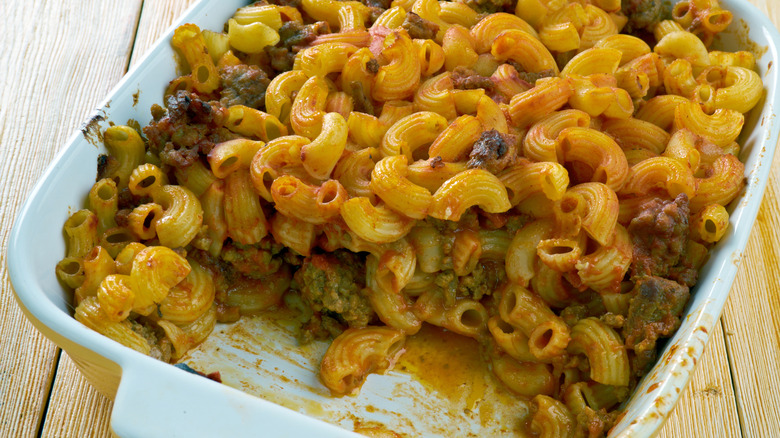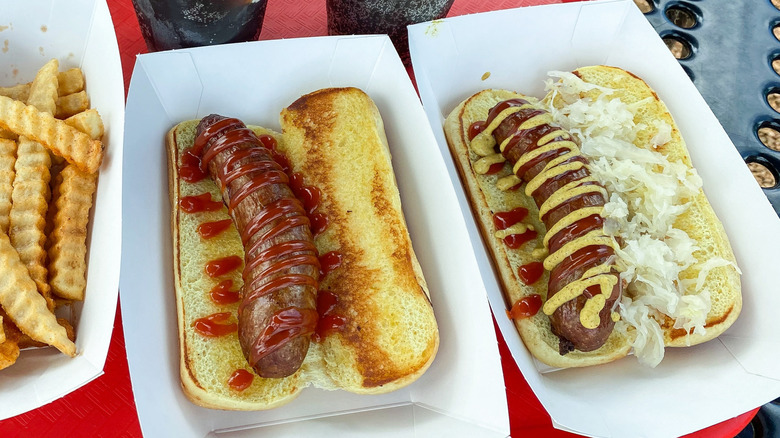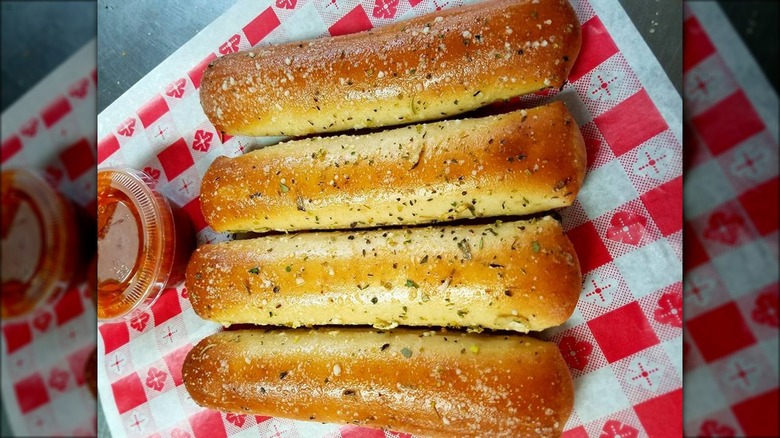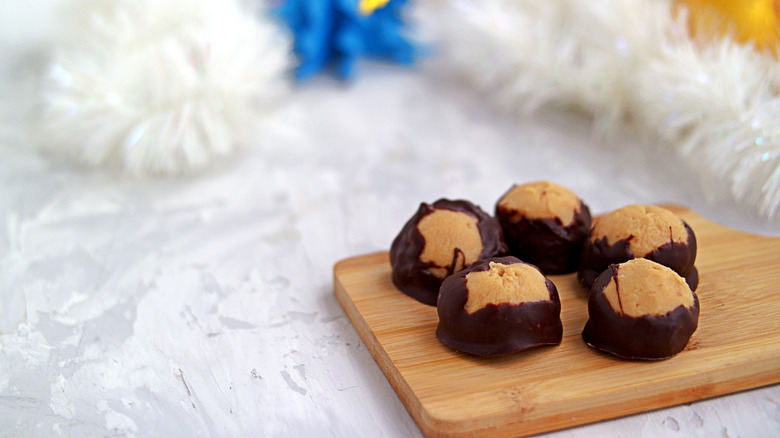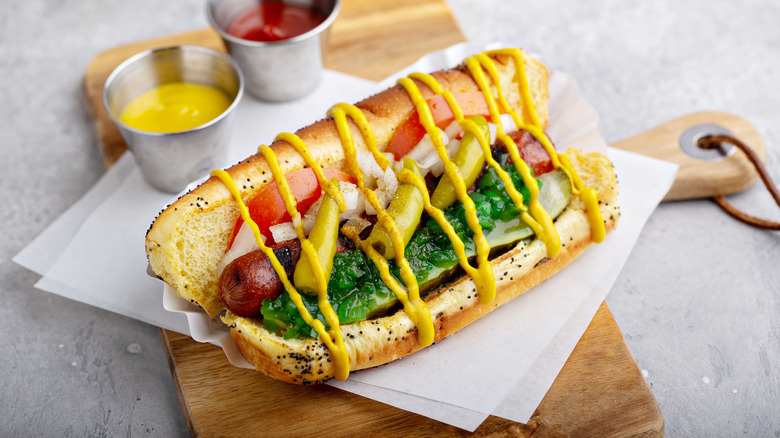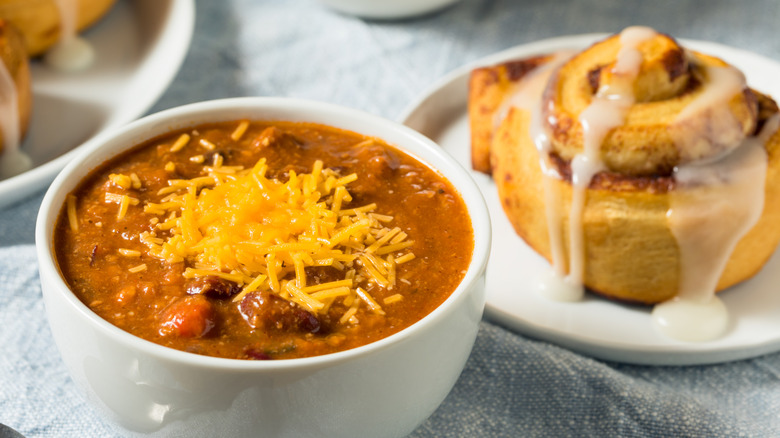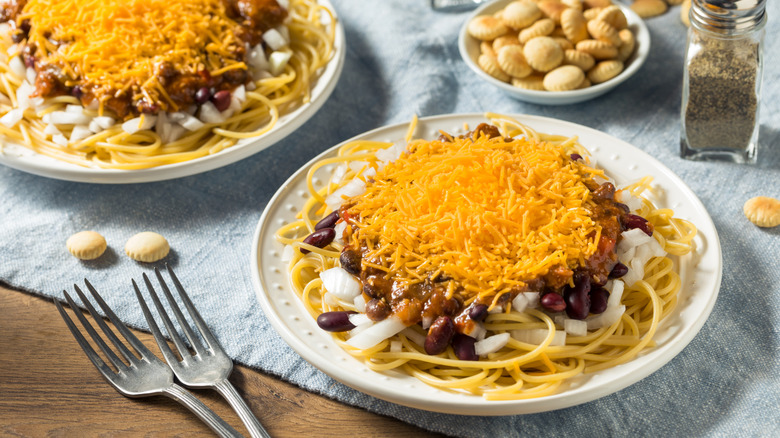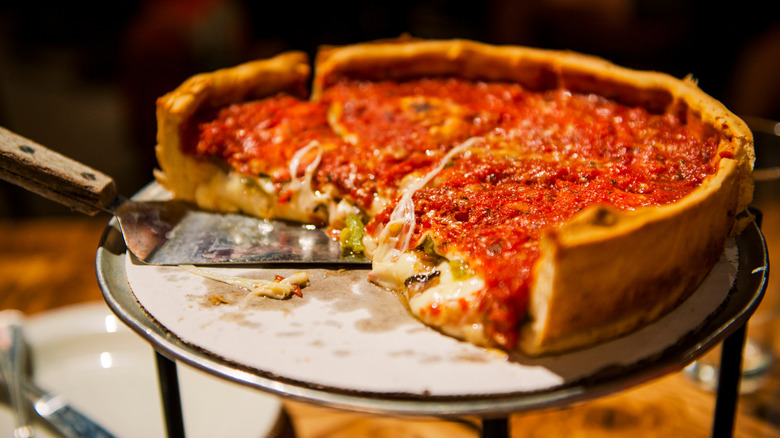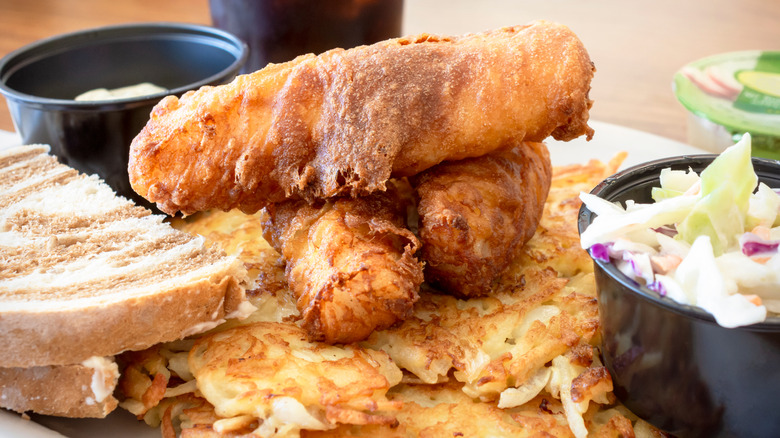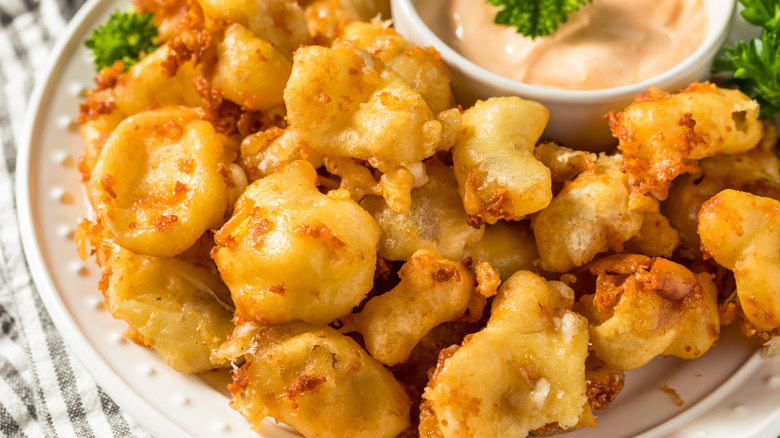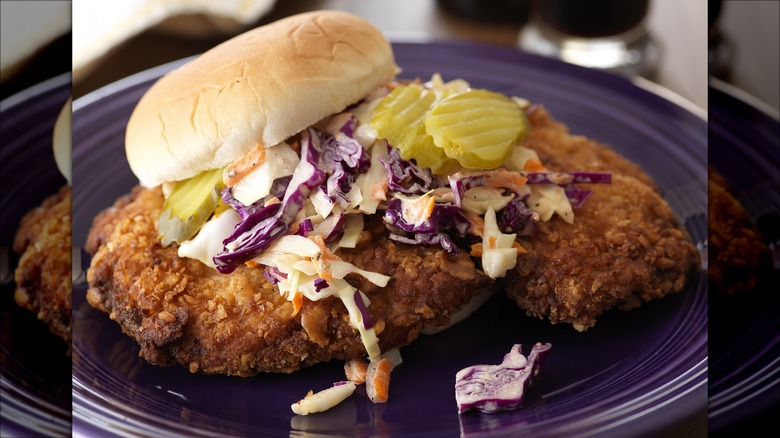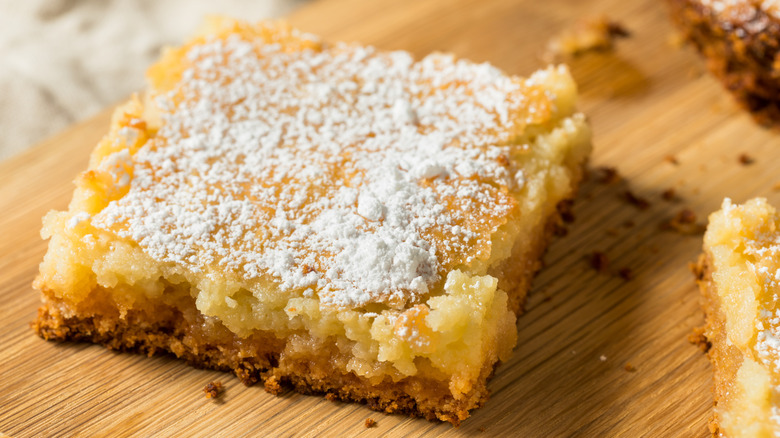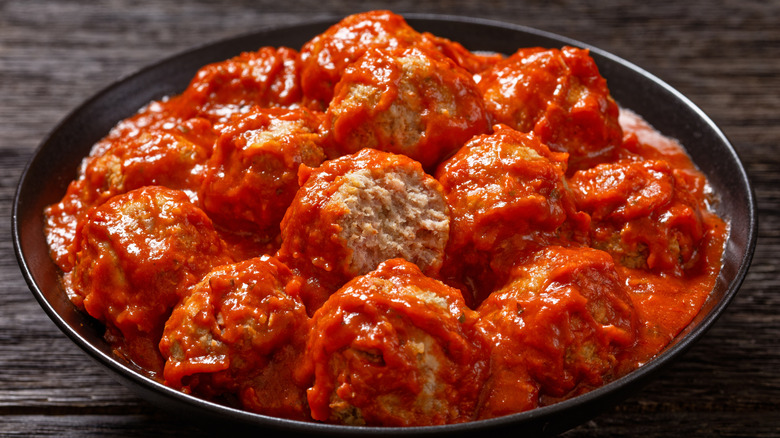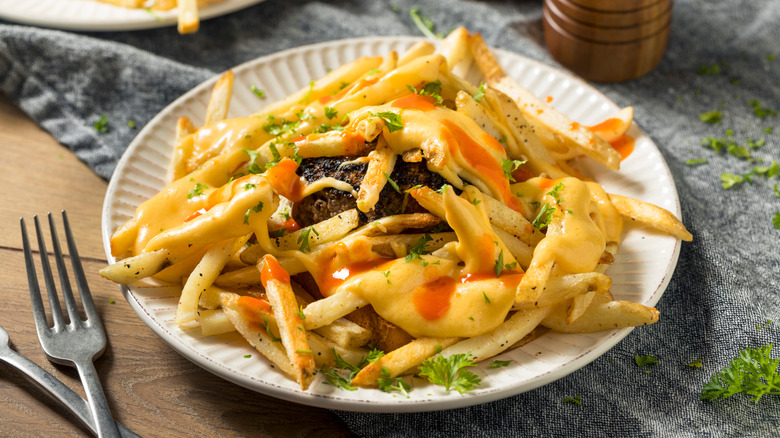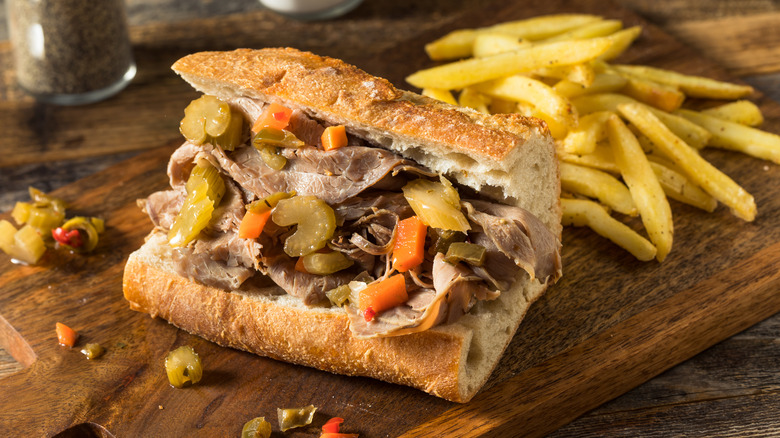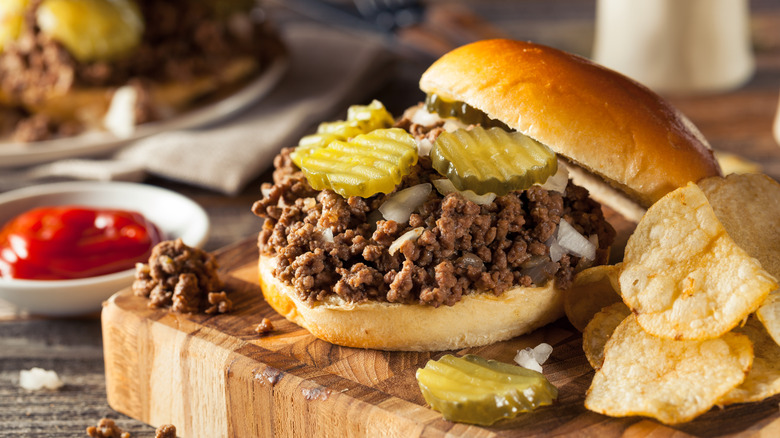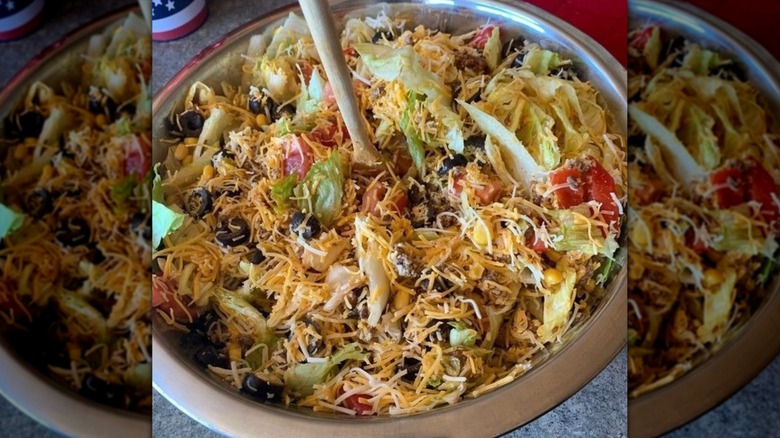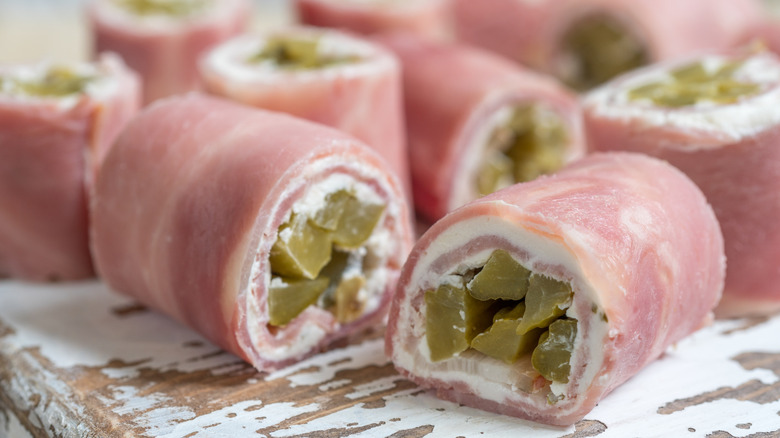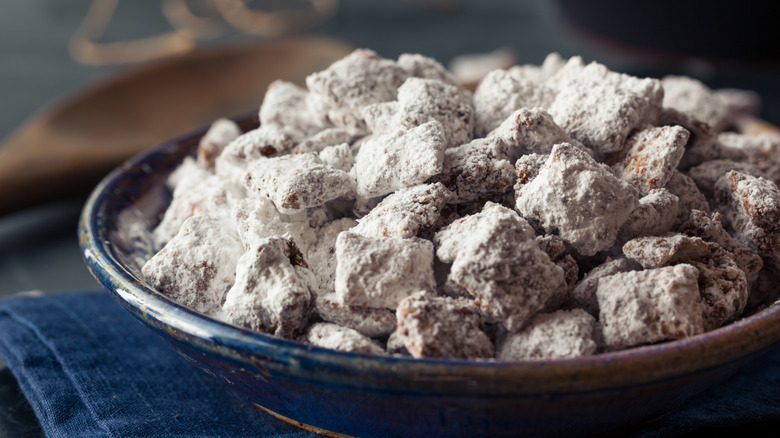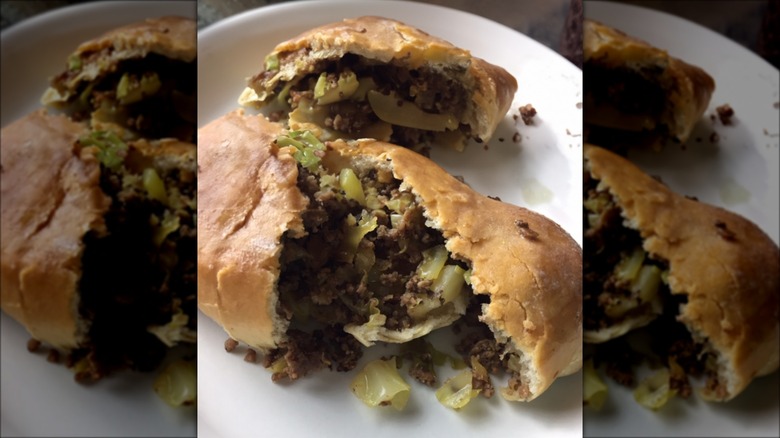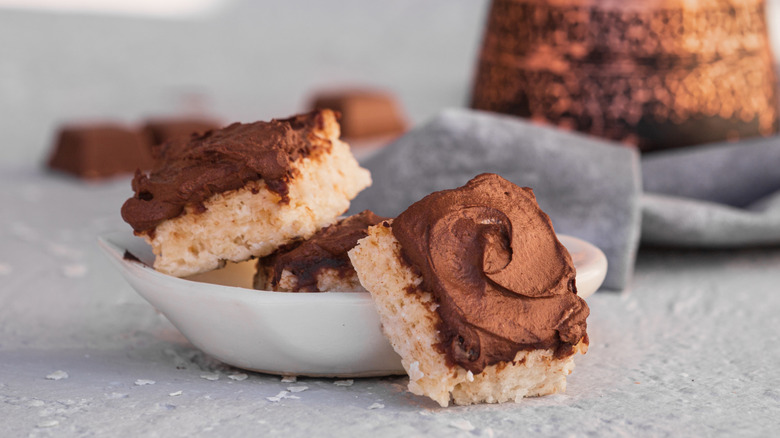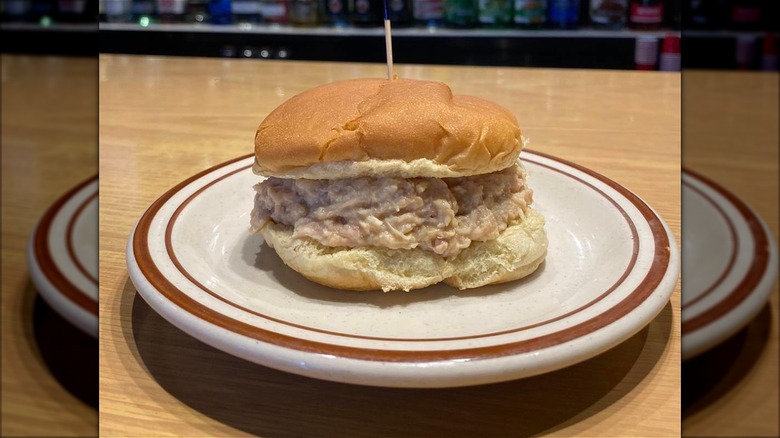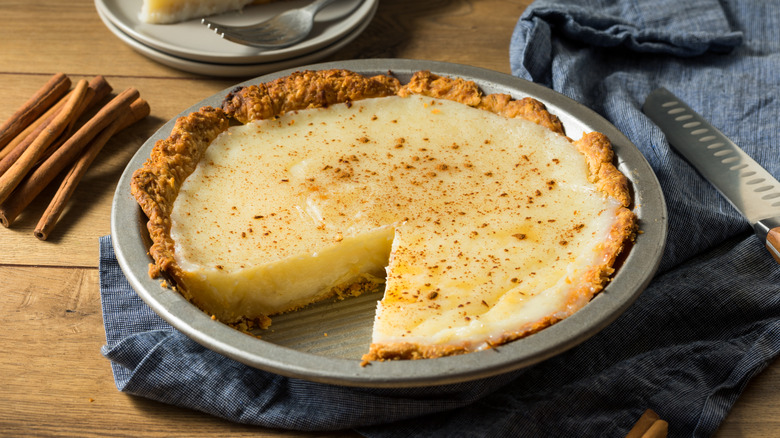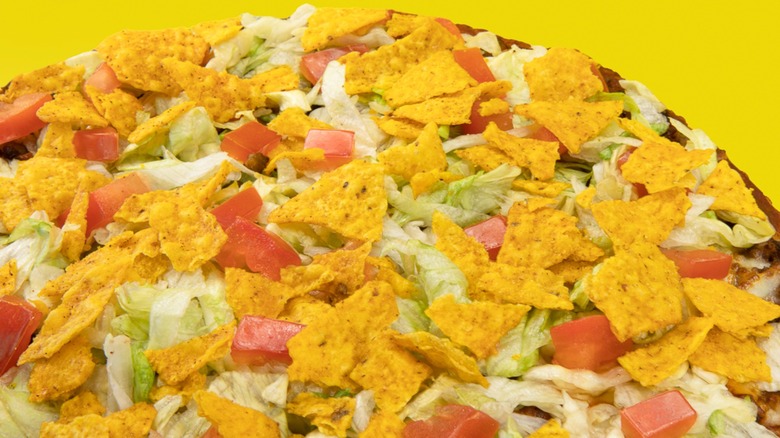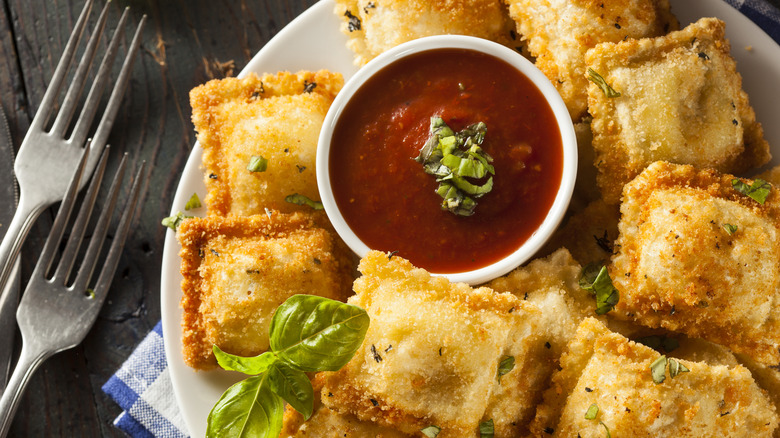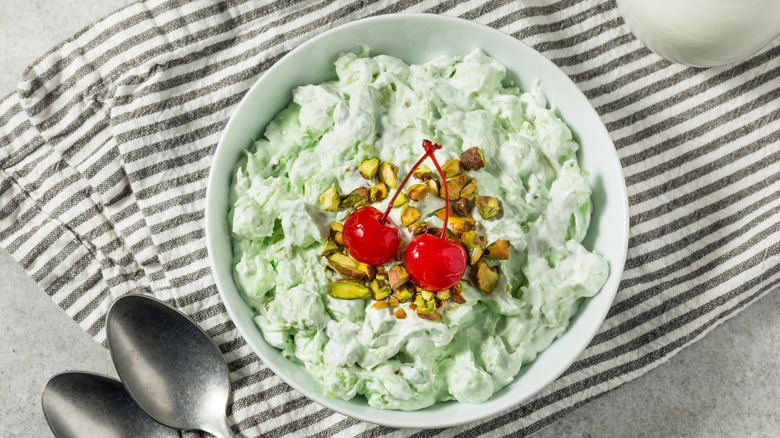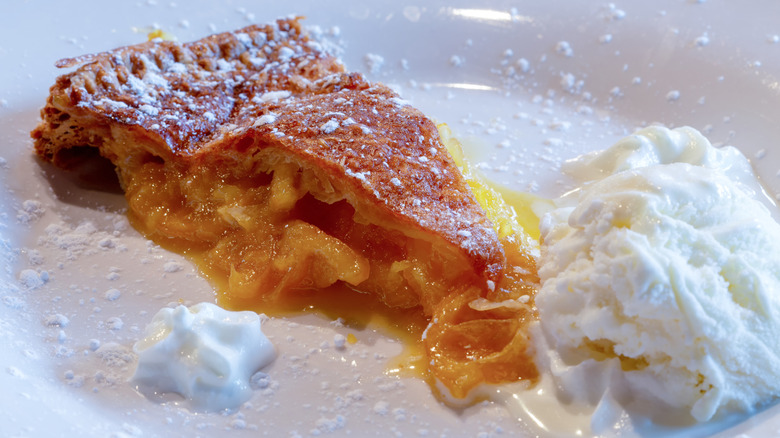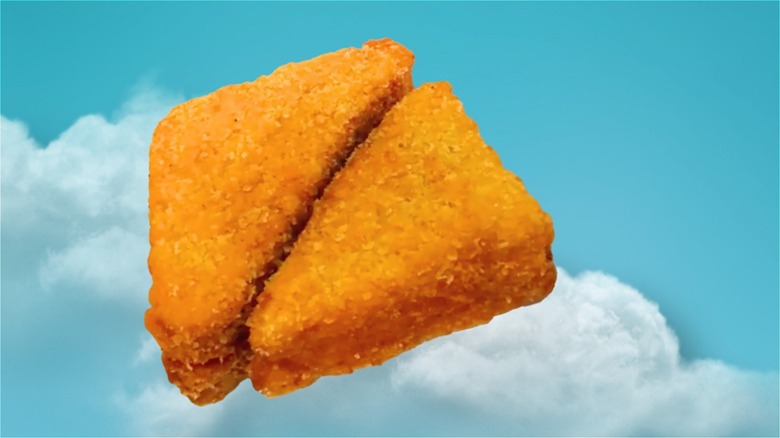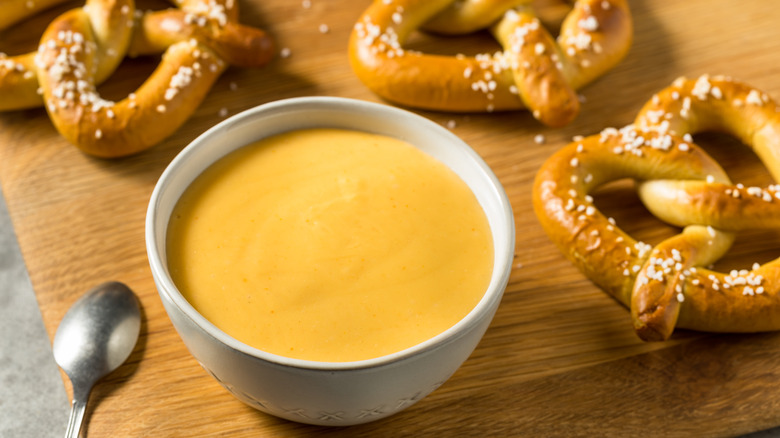35 Dishes That Are Quintessentially Midwestern
The 12 states that comprise the Midwest have a lot to offer. These states are home to roughly 20% of the U.S. population. While the region may best be known for its farmland, unpredictable weather, and industry, America's heartland is a bastion of unique culinary delights.
Ask any Midwesterner from Nebraska to Illinois what foods are quintessentially from the region, and you will get enthusiastic and voluminous opinions. Those born and raised in the middle of the country cling to their traditions proudly, and none of these is more important than what they grew up eating.
The dishes you will find there are best characterized by creativity born from the need to economize and ample portion sizes. They also represent a diverse immigrant population that brought recipes from their homelands and reinvented them using locally available ingredients. Finally, Midwesterners enjoy fried foods and a combination of sweet and savory ingredients. Let's take a culinary journey together and discover what foods make the Midwest so categorically distinct.
1. Beer brats
Beer brats are the perfect example of a culinary tradition born from the ingenuity of immigrants to the U.S. Wisconsin has been home to German migrants since it became a state in 1848. Among the culinary traditions Germans brought from the motherland were sausage making and beer brewing.
Bratwurst is a wide-girthed sausage made from coarsely chopped meat, usually pork, that is highly spiced and embedded in a natural casing without curing salts. To prevent these sausages from exploding on the grill, they often get parboiled. In Wisconsin, the liquid that is preferred for this process is a locally brewed beer bath.
While marjoram may have been the primary seasoning in classic brat recipes, they come in myriad iterations today. Meat shops across the state have developed recipes incorporating novelty items ranging from cheddar and jalapeño to kale and feta. What remains is the cheese state's commitment to beer brats.
2. Bosco Sticks
Michigan-based Bosco's Carry-Out Pizzeria first opened in 1988. It was soon converted into a food distribution center focused on improving school lunches. In 1995, one of its best-sellers was a stuffed crust pizza. In a strange twist of fate, the crust of one such pizza fell off its pie. This prompted owner Mark Artinian to think this would be a genius portable way to deliver pizza to children, and Bosco Sticks were born.
These mozzarella-filled breadsticks, topped with parmesan cheese and baked to golden-brown deliciousness, have grown from local cafeteria food to national culinary sensation thanks to the company's acquisition by Tyson Foods in 2014. It has since expanded to include a pepperoni and cheese stuffed variety. Today, Bosco Sticks are sold in grocery stores and restaurants across the U.S., although their identity remains quintessentially Midwestern.
3. Buckeyes
It should not surprise anyone that a treat named a buckeye should hail from the great state of Ohio. The American buckeye, the state tree, is native to Ohio. It has a nut resembling an acorn. This nut has a distinct-looking poisonous center that makes it instantaneously recognizable.
In 1919, a conglomerate of women opened the Buckeye Candy Company in Brooklyn, Ohio. Its signature candy was a chocolate-dipped peanut butter ball that resembled the nut from the state tree by the same name.
Today, this confection is the state candy, with approximately 6 million pounds consumed annually. If you happen to be visiting the state, you may want to trek to the Ohio Buckeye Candy Trail, which features 37 stops where you can nosh on these sweet treats to your heart's content.
4. Chicago Mix
If you have visited the Windy City, you may have heard about popcorn from the legendary Garret's. This popcorn empire got its humble beginnings in 1949 when its first store opened in the historic Chicago Loop. Early on, the company offered its CaramelCrisp and cheddar-dusted CheeseCorn as separate flavors. But customers were onto something. They soon began combining the sweet and savory recipes, recognizing they were a match made in heaven.
In 1977, the official Garrett Mix was born. It soon acquired the nickname Chicago Mix, a moniker that has since been dropped after Minnesota-based Candyland sued Garrett's for trademark infringement. While the corporation no longer uses the term in its marketing, consumers continue to refer to this distinguished blend as such and travel far and wide to purchase a bag of the mouthwatering mix.
5. Chicago-style hot dogs
The Chicago-style hot dog is another immigrant success story. The earliest origins of hot dogs in the Windy City began with the German community, who brought with them the Vienna sausage. In 1893, Jewish immigrants Samuel Ladany and Emil Reichl introduced Vienna Beef. Its proprietary blend of spices, bright red hue, and distinct snap have helped to make it the preferred dog in Chicago today.
The preferred bun is a poppyseed-coated delight known as Rosen's. These squishy buns are always steamed, never toasted. Finally, the right blend and proportions of toppings are a must. Chicago-style dogs always contain sport peppers, yellow mustard, pickle, onion, tomato, celery salt, and neon green relish that seems unsafe to eat but is quite delicious. Whatever you do, never ask for ketchup on your dog in Chicago, as it is a cardinal sin.
6. Chili with cinnamon rolls
Speaking of sweet and savory combinations, one delicacy revered by Midwesterners in states west of the Mississippi River is chili with cinnamon rolls. While the origins of this unusual combination are hotly contested, many agree that it was popularized after the Second World War when the USDA established the National School Lunch Program in 1946.
This program aimed to provide children with nutritious and affordable foods. Beans were a cost-effective protein source, while baked goods were a birthright for Midwesterners. The combination of chili served with a pastry has since fallen out of favor due to updated nutritional guidelines. That said, eateries across the Midwest still serve the iconic duo.
How to eat this pair depends on individual tastes. Some like to dunk pieces of the sweet cinnamon roll into their chili, while others prefer eating it as a sweet treat after finishing their entrée.
7. Cincinnati chili
Cincinnati Chili has cemented Ohio city as a culinary tourist destination. The earliest origins of the dish are attributed to Macedonian immigrants Tom and John Kiradjieff, who began serving the meat stew at their Empress Chili Parlor in 1922. So what differentiates Cincinnati chili from other kinds of chili? This finely ground thin meat stew is characterized by its sweet and savory combination of ingredients, including cinnamon, allspice, cocoa powder, and Worcestershire sauce.
Knowing how to order is crucial whether you are visiting a Skyline Chili franchise or another chili parlor. A One-way is plain chili. The Two-way includes spaghetti. A Three-way is topped with cheddar. The Four-way incorporates either onions or beans. Finally, a Five-way has all of the above.
When ordering chili on a bun, you will ask for a Coney. These can be served with or without cheese and alligator or lizard-style, with a dill pickle on the side.
8. Deep dish pizza
While the precise origins of the recipe for deep-dish pizza are somewhat contested, the first restaurant to serve it commercially was Pizzeria Uno, opened in 1943 by Ike Sewell and Ric Riccardo. The recipe quickly caught on, with other pizzerias opening all over Chicago, including Gino's East, Lou Malnati's, Paisano's, and more.
What sets deep-dish pizza apart from more traditional pies is its assembly. The baking pan for this kind of pizza is about one inch deep, which means it takes a while to bake. After the dough is pressed into the pan and up the sides, ingredients are layered, beginning with the cheese at the bottom, meat and veggies in the center, and sauce on top before spending time in the oven. The result is something almost more like a quiche than pizza, with a crust that should be crispy around the edges.
9. Fish fry
The Friday night fish fry is a Wisconsin institution decades in the making. Its origins bring together religion, history, and geography. Wisconsin has long been a hotbed of Catholicism. One of the traditions associated with Catholicism includes eating fish on Fridays.
During Prohibition, struggling pubs began offering fried fish on Fridays to help offset lost revenues and keep them solvent. Even after the end of Prohibition, pubs continued the tradition, capitalizing on the abundant freshwater fish, like walleye, perch, and bluegill, available in Wisconsin.
During the Second Vatican Council in 1966, fasting was no longer required year-round but only during the 40 days of Lent. Nonetheless, fish fries persisted as a way of life, embedded in the culture of Wisconsinites of all religious backgrounds. Today, you can get a fish fry any time of year served with french fries or potato pancakes, coleslaw, and a pint of beer.
10. Fried cheese curds
Cheese curds are a natural by-product of the cheesemaking process. With Wisconsin being the cheese capital of the U.S., cheese curds have become an obsession there. What makes these globules of dairy unique is their squeaky texture, which can be an acquired taste.
Though cheese curds are sold as is, deep-fried curds have become a sensation at restaurants and fairgrounds across the Midwest. Every location has its distinct recipe, but for the most part, the curds are gently coated in seasoned breadcrumbs before being fried to golden perfection.
Deep-fried cheese curds are usually served with ranch dressing, though any dipping sauce can accompany these cheesy delights. They are often served as an alternative to french fries, as a garnish on soups or salads, and even as a condiment atop a spicy bloody mary.
11. Fried pork tenderloins
While Iowans have claimed fried pork tenderloins as their own, the sandwich was made in the Hoosier State. In 1904, Nicholas Freinstein created the monster-size pork delicacy while operating a pushcart in Huntington, Indiana. The idea was to have a more user-friendly portable variation of a classic German Wiener schnitzel. Since then, permutations of this sandwich have made their way across what is affectionately known as the "pork tenderloin corridor" of the Midwest, spanning along Interstate 80 from Indiana to Iowa, according to Iowa Magazine.
The key to this sandwich is how the pork loin is prepared. Once the loin is pounded, it is soaked in buttermilk to tenderize before getting breaded and fried. This enormous continent-sized mass of pork is moist, crispy, and golden brown, reflecting the superiority of Midwestern pork.
12. Gooey butter cake
The precise origin of the gooey butter cake is somewhat disputed. What we know for sure is that butter cake was developed as an accident by master bakers in St. Louis, Missouri, sometime around the late 1930s or early 1940s. Regardless of which story you believe, a baker's intent to produce a yeast-based coffee cake was thwarted by a measuring error. What resulted was a pudding-like cake that became an instant classic.
Contemporary recipes for this dessert are often made using a traditional yellow cake base layered in a rectangular pan with a custard made from blending eggs, melted butter, and cream cheese before getting baked until just barely set. The final product is cut into squares and topped with powdered sugar.
13. Ham balls
Residents of Iowa will tell you that no family gathering would be complete without a casserole dish full of ham balls. This unusual delicacy is a relic of Dutch heritage that takes advantage of leftover cured ham. While precise recipes may vary, what is never tampered with is the binder utilized in making these porcine meatballs — graham crackers.
Most recipes combine ground ham with graham cracker crumbs, eggs, onions, and milk before forming this mixture into roughly 2-inch diameter balls. These balls are placed in a single layer into a casserole dish and then doused in a sauce made from condensed tomato soup, brown sugar, vinegar, and mustard before being baked. The result is something quite salty but highly addictive. If you want to make a native Iowan feel at home during your next celebration, whip up a batch of ham balls.
14. Horseshoe
The Horseshoe Sandwich originated at the Leland Hotel in Springfield, Illinois, in the late 1920s. It is commonly believed that it was invented by then-head chef Joe Schweska, who got the idea from his wife, Elizabeth. The earliest iteration was a take on a Welsh Rarebit, a cheesy sauce served atop toasted bread. In our brains, this dish looks like the American cousin of a classic Quebecois poutine without the cheese curds.
The dish gets its name from the shape of the original cut of ham used for this open-faced sandwich. The ham was placed atop toasted bread, doused with a liberal serving of a cheese sauce, and garnished with roasted potato slices intended to represent the nails in a horseshoe. Today, the potatoes have been replaced with french fries, and the ham is often substituted with hamburger patties. The secret weapon is still the unctuous cheesy sauce.
15. 'Hotdish'
The hotdish is an iconic casserole-like comfort food that represents the frugality and creativity of Midwesterners. The first recipe for a hotdish was included in a Minnesota Lutheran church cookbook in 1930. The original Minnesota hotdish was similar to (but not quite the same as) a casserole. The recipe included 2 pounds of ground beef, Creamette elbow macaroni, and frozen peas. In 1934, Campbell's introduced its first condensed creamed soups. These could be used as a binder or base for any hotdish. In 1953, Ore-Ida introduced Tater Tots, which rapidly became the go-to topping of choice for any hotdish.
All hotdish recipes contain the same ingredients. They begin with a protein followed by a canned vegetable. Next comes a starch and the canned creamed soup or sauce. The final layer is the crunchy topping, like French fried onions, chow mein noodles, crushed potato chips, or tater tots. If you are invited to a Midwestern party, bring a hotdish.
16. Italian beef sandwich
Italian beef is a mouth-watering sandwich that emerged in the early 1900s. It was the brainchild of Italian immigrants to Chicago who were desperate to figure out how to turn an unpalatable hunk of beef into something edible. This is yet another example of frugality meets creativity, a hallmark of Midwestern fare.
The key to authentic Italian beef is comprehending what it is not. It is not a French dip, Philly cheesesteak, or roast beef sandwich. It is roughly 7 inches long and made with impossibly thinly sliced beef layered onto a roll. This roll is dense enough in texture to absorb being served wet or juicy without completely disintegrating. The whole thing is generally topped off with a hot giardiniera, creating something oddly heavy for its size and somewhat messy to consume. And whatever you do, do not ask for cheese on top unless you want to insult the sandwich.
17. Kringle
The kringle is a pastry hailing from Denmark. It became popular in Wisconsin around the late 1800s when Danish bakers immigrated there. Racine, Wisconsin, is considered the "most Danish city in America," having more shops selling kringles than anywhere else in the U.S. In 2013, the Kringle became the "Official Wisconsin Pastry," according to What's Cooking America.
The kringle is a yeast-based pastry with over 30 layers of dough delicately filled with fruits, nuts, or cheese before getting topped with icing. This pastry can take days to produce, with each layer slowly and carefully rolled out with heartstopping quantities of butter between them. While kringle was historically pretzel-shaped in Denmark, hence its name, it was transformed into a round, flat shape by American Danish bakers.
While kringles are available year-round, they are frequently included in Christmas traditions across the Midwest. Almonds are the most traditional filling for the holiday season.
18. Loose Meat sandwich
Call it a Maid-Rite or a cross between a sloppy joe and a hamburger; the loose meat sandwich is quintessentially Iowan. Rumor has it that this specialty was invented at a Sioux City tavern in the 1920s. It was not popularized until the first Maid-Rite popped up in Muscatine, Iowa, in 1926, after which it could be found at virtually any hole in the wall across the state.
The sandwich itself is pretty basic. Ground beef is cooked and crumbled, seasoned with salt and pepper, and stacked a mile high with chopped onions atop a hamburger bun. It may not be visually appealing, but it is Midwestern comfort food at its best. If you want to change things up, stop at a Maid-Rite and order a Blue-Rite, a loose meat sandwich with blue cheese.
19. Midwestern taco salad
Midwestern or Minnesota taco salad is a popular dish across the region. While nobody knows where it originated, it bears little resemblance to its Tex-Mex cousin. Most recipes start with a base of crumbled-up Nacho Cheese Doritos. Then add shredded iceberg lettuce, tomatoes, canned black olives, shredded cheddar cheese, and ground beef cooked with a package of taco seasoning.
Once the main ingredients are assembled, the whole thing is tossed together with Catalina or Western dressing, giving the dish a tangy, zippy kick. While some people like to change things up using different flavored Doritos or adding items like beans, guacamole, and salsa, these are not traditional and might just start a riot at any Midwestern block party. It's hard to argue with a classic that delivers just the right balance of crunch, salt, spice, acid, and even more salt.
20. Minnesota sushi
Minnesota, Lutheran, or Midwest sushi is a popular appetizer, showing up at parties across the region. While Germans and Scandinavians from Minnesota to Michigan claim to have invented the recipe, it would be hard to imagine a potluck of any ethnicity without these little bite-sized beauties.
The basic recipe is simple. Schmear cream cheese over a dill pickle, wrap it in ham and slice it into chunks. There are several variations of this theme. Some envelop the ham in a tortilla. Others add different kinds of meat or cheese. And still, others combine all the ingredients into a dip, which defeats the purpose of the whole sushi theme if you ask us.
Whatever you do, don't mess with the dill pickle. The acidity of the pickle paired with the creamy cheese and salty meat makes this dish work.
21. Puppy Chow
While Puppy Chow may sound like something you should feed your dogs, it is a human treat popular at Christmas across the upper Midwest, spanning from the Dakotas to Wisconsin. Its connection to dog food isn't as far-fetched as you might think. Its primary ingredient, Chex cereal, was invented by the Ralston Purina Company of St. Louis of dog and cat food fame in 1937.
The blend, now sold commercially by General Mills as Muddy Buddies, has dubious origins. But it is easy to make, combining Chex cereal with chocolate chips, peanut butter, melted butter, and vanilla before dumping the whole thing into powdered sugar for a festive, messy, finger-licking treat.
22. Runza
If you are driving through Nebraska and are feeling peckish, you might end up stopping at a Runza restaurant. These eateries have dotted the Nebraska landscape since they were established in the 1940s. Its claim to fame — a kind of sandwich known as a Hot Pocket.
This rectangular pastry is filled with meat and cabbage before getting baked to a crispy golden brown. It is an adaptation of the Central and Eastern European pierogi brought to the Midwest by immigrants. Those residing in Kansas and elsewhere may be familiar with its cousin, the bierock. They are essentially the same thing in different shapes.
23. Scotcheroos
In Iowa, rice crispy treats are passé. Why be mainstream when you can make a scotcheroo? Originally appearing on a box of Rice Crispy Treats in the 1960s, the scotcheroo soon became a favorite dessert for any bake sale or holiday gathering worth its salt in Iowa. Regardless of where it originated, Iowans cling fiercely to this dessert as part of their rightful identity.
The recipe is simple. Combine Rice Krispies with sugar, corn syrup, and peanut butter. Then, top the whole thing with melted chocolate and butterscotch chips. The result is delicious and so easy to make that even the youngest members of your family can participate. And don't limit yourself to a rectangular shape. Get snazzy by using cookie cutters or baking them in round pans.
24. Shredded chicken sandwich
The Buckeye State has another trick up its sleeve. Only in Ohio will you find the iconic shredded chicken sandwich. While it is a mainstay at sports events and tailgating parties, it is a staple offering at virtually any family potluck. The earliest known iteration served commercially came from a drive-through known as Woody's Root Beer Stand, which has been standing since 1979.
Though recipes differ and secret ingredients abound, commonalities include chicken stewed for hours in canned cream of chicken soup, with poultry seasoning and crumbled Ruffles potato chips. We admit to having some skepticism about this dish. When the shredded chicken gets heaped atop a sandwich roll or hamburger bun, the result is salty, rich, and delicious. For an unorthodox twist, try garnishing with pickled jalapeños or pepperoncini.
25. Sugar cream pie
Sugar cream, Hoosier, finger, or desperation pie is considered the unofficial dessert of Indiana. The recipe is believed to have been born within the Shaker or Amish communities in the early 1800s, which predates Indiana statehood. What makes this pie so distinct is its simplicity. It can be stirred with your fingers and is often made with sparse ingredients found in even the most desperate times, as evidenced by some of its monikers.
Purists insist that while modern-day recipes often include eggs, an authentic sugar cream pie should be fashioned without eggs. A basic custard is made by combining sugar, flour, and cream and is cooked on the stovetop before being added to a pie crust and baked until just set. The recipe bears some similarities to a classic Quebecois tartes au sucre, making the origin of this dessert even more intriguing.
26. Taco Pizza
Taco pizza was invented by Joe Whitty around 1972 at his Happy Joe's pizzeria in Davenport, Iowa. This pie is a symphony of textures beloved by those who grew up eating it.
The pizza begins with tomato paste and a thin layer of refried beans. This is followed by cheese, a ground beef and sausage blend, tomatoes, and lettuce. The pièce de résistance is the topping, a proprietary recipe for a nacho-flavored taco chip that gets crumbled up before adorning the pizza, providing just the right amount of crunch over the gooey layers of toppings underneath it.
Don't skip the Spicey Joe's taco sauce available with each pizza if you need a kick. This barely spicy sauce resembles a doctored-up ketchup. It helps to liven things up and can be purchased by the bottle for those wanting to bring the taste of Happy Joe's home with them.
27. Toasted ravioli
The term toasted ravioli is a bit of a misnomer. These types of ravioli are deep-fried. Their origin story has been hotly contested, with myriad versions attributing the invention to a drunken accident where a chef mistook oil for water. The first written evidence of these ravioli being served at a restaurant comes from a 1943 ad printed in the St. Louis Star and Times by Oldani's restaurant.
Though toasted ravioli can now be found in restaurants across the U.S. in some parts of the Midwest, like pockets of Central Illinois, they are a staple comfort food accompaniment to fried chicken. To confuse matters even further, the terms ravioli, ravs, and tortellini ravioli are often used interchangeably, and you never know whether you will actually get square ravioli or tortellini.
28. Watergate Salad
If there is one dish that Midwesterners unashamedly claim as their own, it is the dessert salad. These Jell-O or pudding-based delights make frequent appearances at church potlucks and alongside other standards at any Midwestern gathering. One of the more iconic of these is the Watergate salad.
This combination of pistachio pudding mix, canned pineapple, whipped topping, and chopped nuts became popular in the 1970s. While its origins are not well-known, what is certain is that despite its moniker, the verdant concoction was not born out of the infamous political scandal by the same name. It was likely conceived by the Jell-O brand when it introduced its pistachio-flavored pudding in 1975. It is believed to have been dubbed Watergate salad because it reassembled a cake by the same name, with both containing lots of nuts, like the White House at the time.
29. Strawberry Delight
Also known as strawberry dream, strawberry yum yum, and strawberry cheesecake lush, strawberry delight is a dessert of unknown origin that is extremely popular across the Midwest. This no-bake summer classic is a cross between a strawberry cheesecake and a strawberry shortcake, with a twist. Like many Midwestern desserts, gelatin is a key ingredient, giving this dessert a creamy texture and vibrant pink hue.
The base of this dessert is a basic graham cracker crust. It is topped with alternating layers of freshly sliced, ripe strawberries, a cheesecake fluff, whipped cream, and a strawberry-flavored fluff. The whole thing sets up in the refrigerator for up to 24 hours before it is served. Variations are occasionally made with Nilla Wafers or shortbread cookies for the crust. While you can make your own whipped cream, Midwesterners often prefer the convenience, texture, and flavor of store-bought Cool Whip.
30. Shaker Lemon Pie
Shaker Lemon Pie or Ohio Shaker Pie is a relic of the Shaker community that proliferated in parts of Ohio during the late 1700s and early 1800s. These communities of religious pacifists developed their own Utopian villages based upon conservative values, which included simplicity and frugality. While they tended to live off the land, one item they did import was lemons, which they believed were necessary for a healthy diet. This pie was a recipe that emerged from the ingenuity and waste-not-want-not attitude that characterized the Shaker belief system.
Featuring a double pie crust, the custard-like filling of this dessert features whole, sliced lemons. These are macerated in sugar to help eliminate some of their tartness before being combined with the egg custard and baked. The result is a filling that is something of a cross between a classic lemon curd and lemon marmalade.
31. Cheese Frenchee
Among the tastiest, not-so-secret delicacies hailing from the great state of Nebraska is the Cheese Frenchee or Frenchie. This spin on a grilled cheese sandwich was invented in the 1950s by the owners of a quaint diner in Lincoln, Nebraska named King's Food Host. It's name is presumably an homage to its French cousin the croque monsieur, to which it bears a striking, albeit rustic, resemblance.
The Cheese Frenchee is nothing more than a deep-fried grilled cheese sandwich. Once the sandwich is assembled, it is cut into triangles, which are battered and coated in a crust of corn flakes before it is tossed into sizzling hot oil and cooked to a deep, golden brown. The exterior remains crunchy, while the inside is impossibly gooey. Today, this specialty can be found at any number of fast food joints dotting the countryside of the state.
32. Kentucky Beer Cheese
While Kentucky may be best-known for its bourbon trail, there is another specialty that exemplifies the bluegrass state. Kentucky beer cheese is exactly what it sounds like, a combination of cheese and leftover beer. These are puréed together until smooth and creamy along with various seasonings and aromatics, including a healthy kick of cayenne pepper and Tabasco sauce. The resulting dip is typically served alongside crackers and pretzels to help whet your whistle and encourage you to imbibe more.
The recipe was popularized by a diner located in Winchester, Kentucky in the 1930s, which was owned by one Johnny Allman. Allman created his recipe for "Snappy Cheese" as an homage to his time spent in Arizona, where he developed an affinity for spicy food. While it would seem that any kind of beer could work in this recipe, most opt for a light German style lager as opposed to a hoppy IPA or robust stout, both of which can overshadow the other ingredients in the dip.
33. Kansas City Barbecue
Kansas City barbecue may have begun as a method of cooking, but it has become a source of pride and a culinary identity for those inhabiting this region of the Midwest. It emerged from humble beginnings with a man named Henry Perry who in the 1920s started preparing his distinctive version of barbecue at a stand located next to his streetcar barn. His style was characterized by meat that was seasoned with a complex dry rub, smoked with a combination of hickory and oak woods, and topped with a rich, tomato-based sauce that was punctuated by caramel-like notes of molasses and zesty vinegar.
Kansas City barbecue has since evolved to be almost exclusively pork-based, in contrast with the beefy Texas barbecue. No Kansas City barbecue institution would be authentic if it didn't serve burnt ends and baked beans with slaw for side dishes. Popular chains include Arthur Bryant's, Gates BBQ, Joe's Kansas City Bar-B-Que, and Jones Bar-B-Q, among others.
34. Kansas Zwiebach
Many of the traditional foods in the Midwest are the product of immigrants. One such food item is the Kansas Zwiebach. These distinctly-shaped, pillowy rolls were a staple of Mennonite families who came to America from Russia in the late 1800s. These families subsisted off these rolls, which could be toasted and rendered virtually non-perishable, making them a fantastic food source for long voyages.
Kansas Zwiebach are typically made from hearty Turkey Red wheat, which was brought to Kansas by the Mennonites. The flour from this wheat is combined with milk and copious quantities of butter before the tender bread dough is leavened. These knob-topped rolls were historically baked in grass burner ovens in the outdoor kitchens with which every Mennonite Kansas farm was outfitted. They were a common bread served at weddings and other festivities, though they are now found all across the Midwest.
35. North Dakota Juneberry Pie
North Dakota and a wide swath of the Northern Plains is known for a very unique berry that is fashioned into a delectable pie every summer. Known as the Blueberry of the Northern Plains, the Juneberry, Serviceberry, or Shadbush is a unique fruit that is reminiscent of a blueberry, but possesses its own distinct flavor. These indigo-hued globes ranging in diameter between ¼ and ⅓ of an inch are punctuated by tender, tapered seeds that have a unique nutty flavor similar to almonds.
When turned into a pie, these berries develop an unctuous texture and potent flavor redolent of apples or pears. This single-crust pie is filled with a combination of the juneberries, which are flavored with lemon zest and nutmeg. The whole thing is adorned with a crumble topping fashioned from flour, sugar, butter, and hazelnuts before it is baked.
